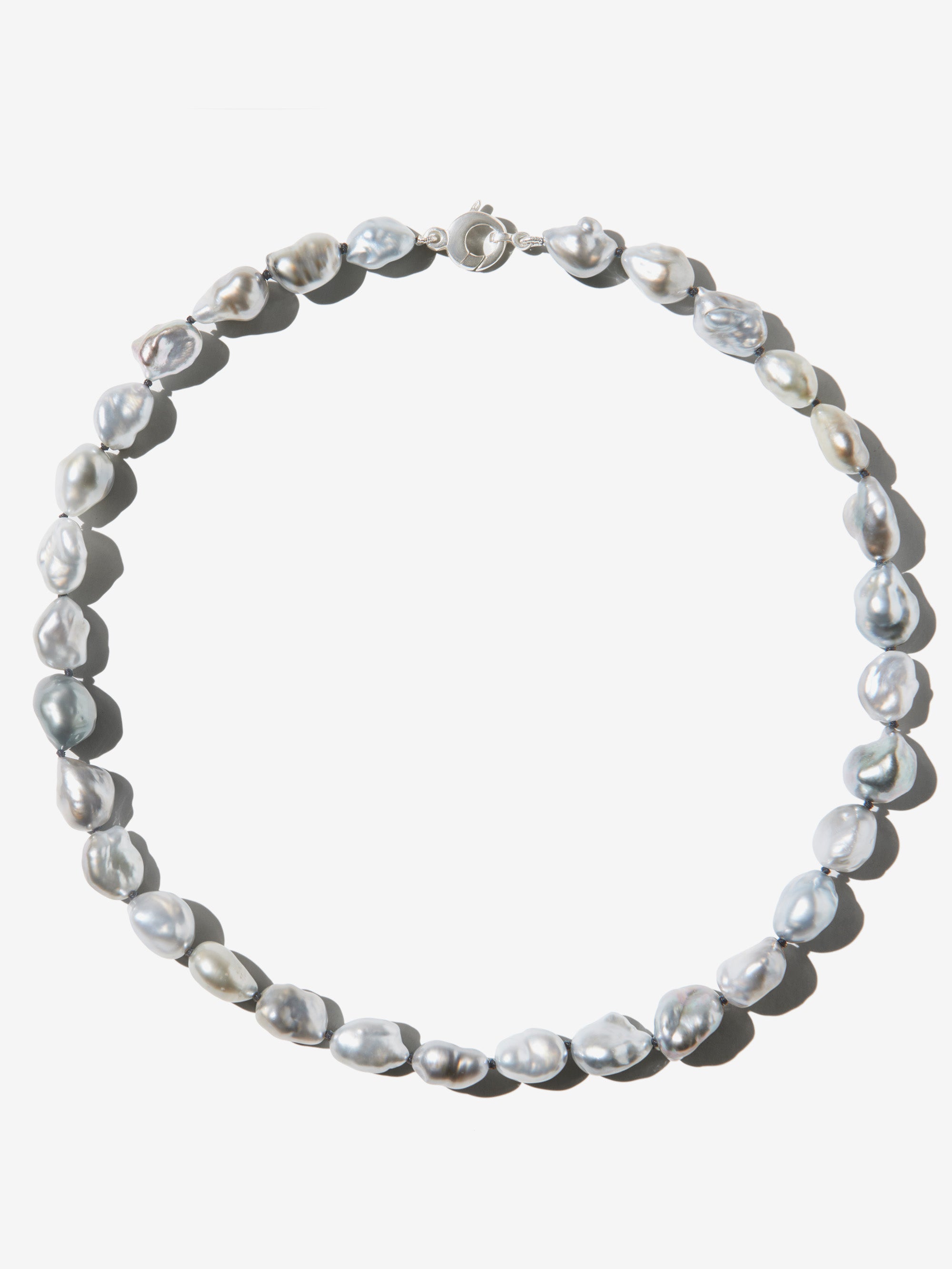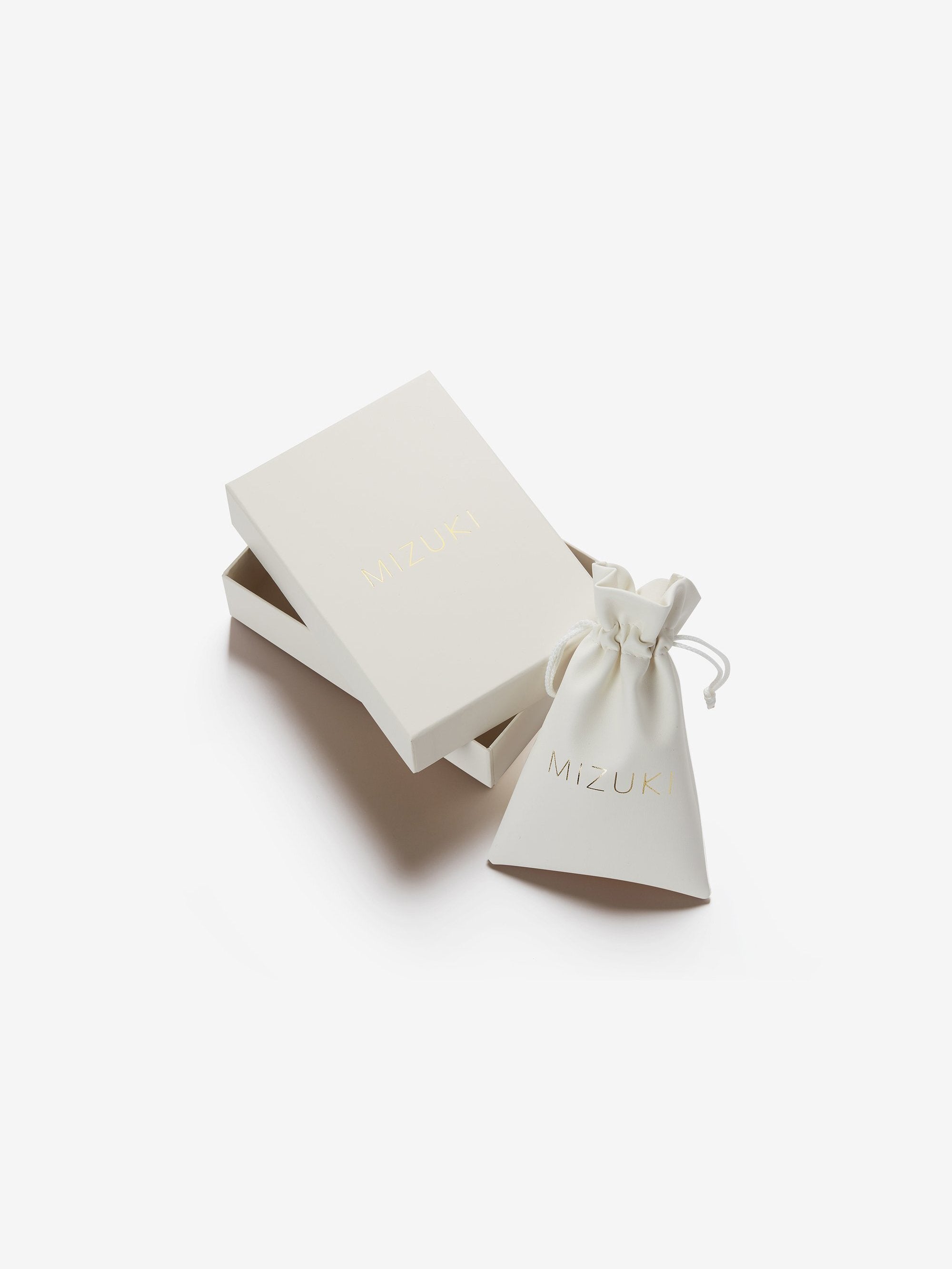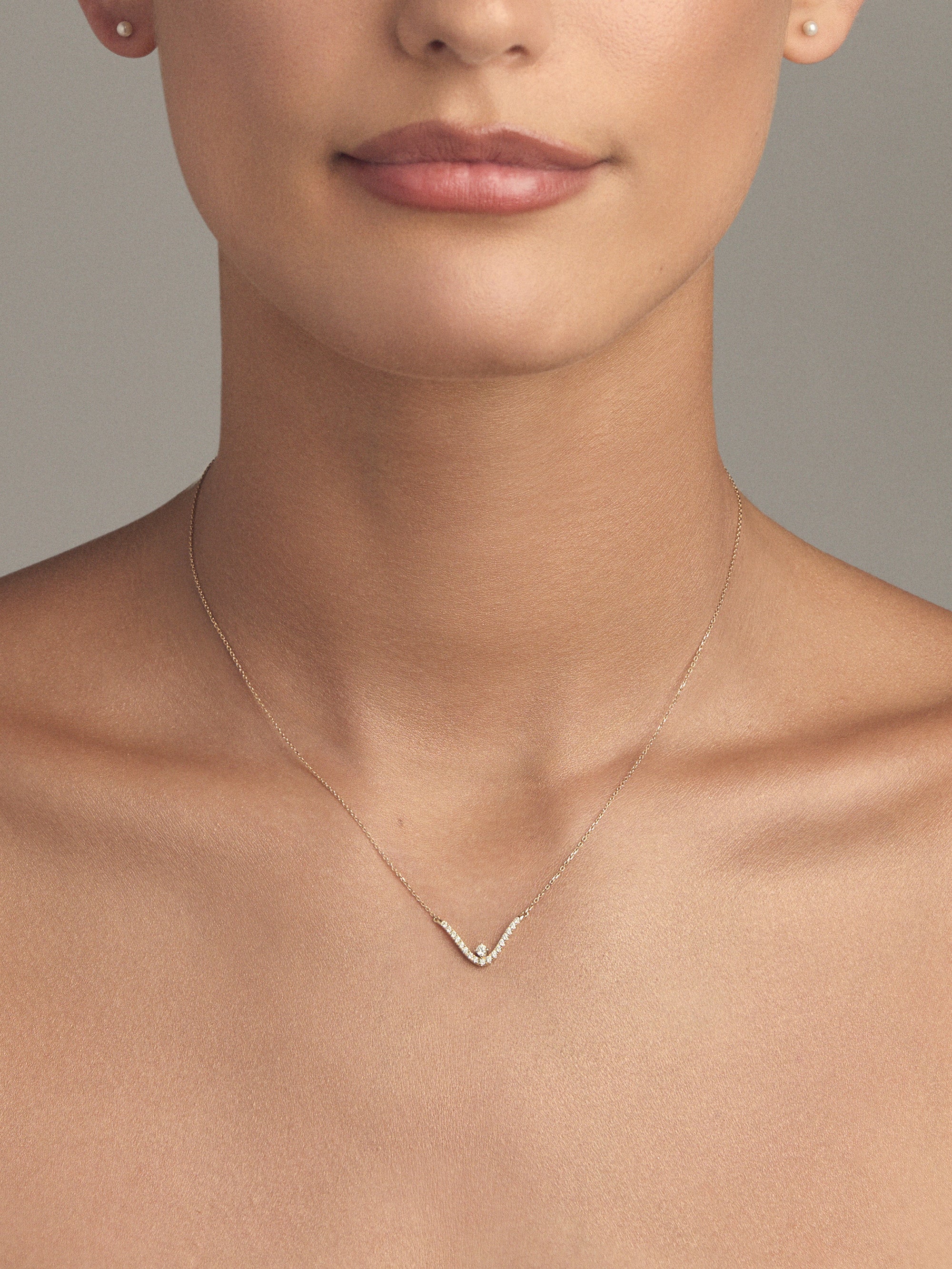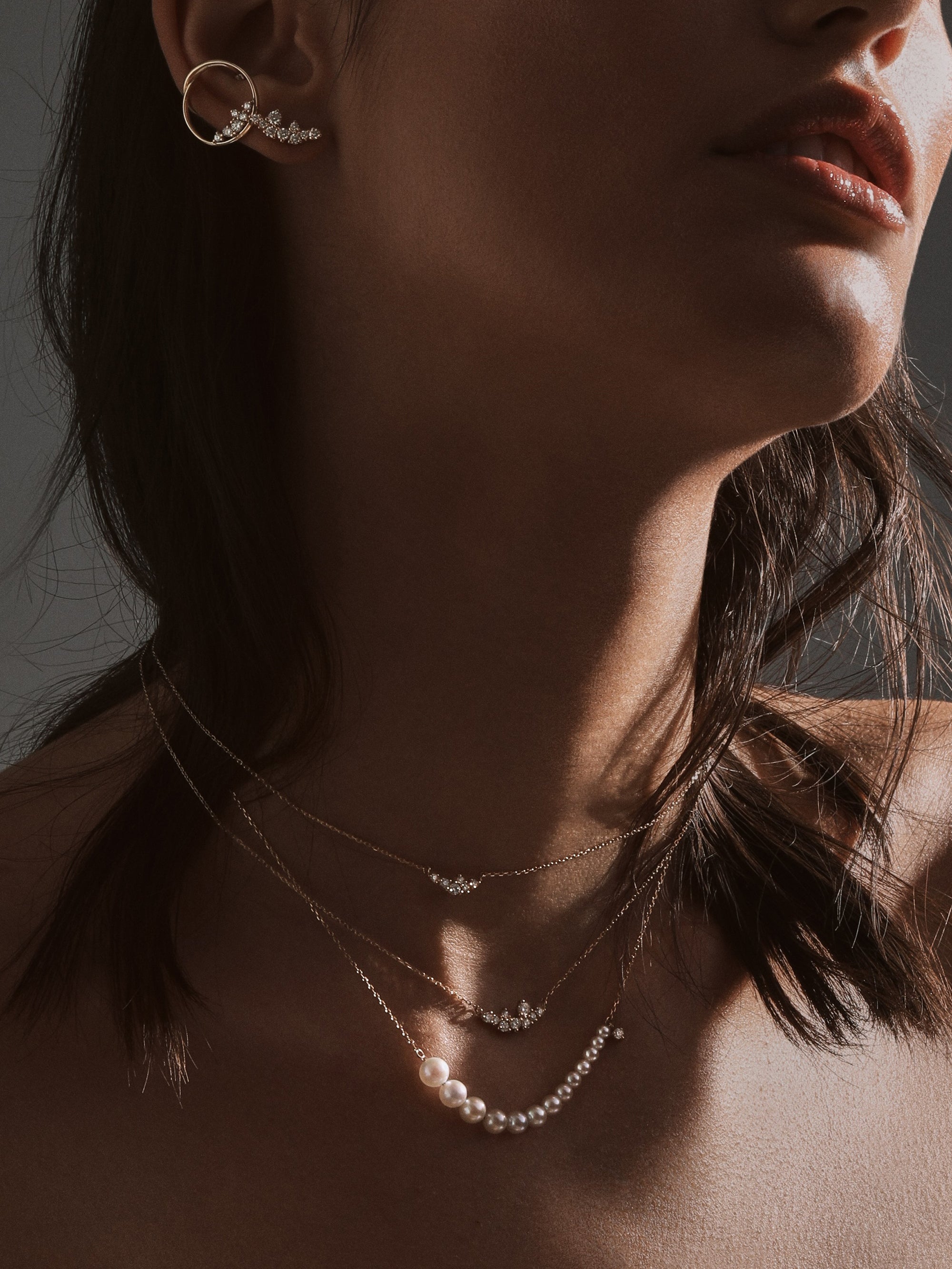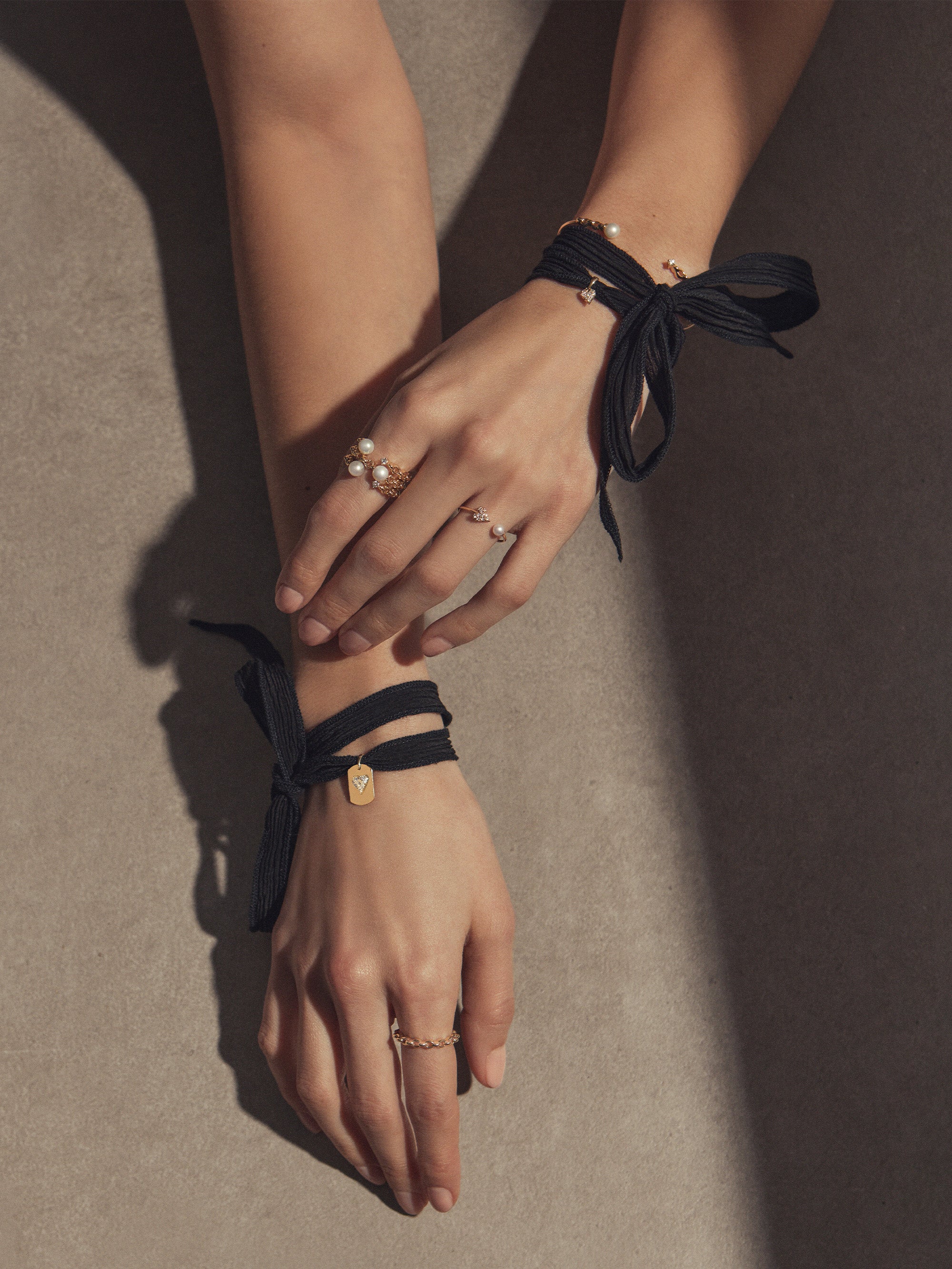
Materials
Mizuki only works with industry veterans with the utmost reputations, sourcing processes and business standards. Mizuki’s high standard of quality control is known and respected throughout the jewelry industry.
Types of Pearls
Pearls can be classified into two main categories based on their source: natural pearls and cultured pearls.
Natural Pearls
Formed naturally in the wild without human intervention. A natural pearl occurs when an irritant (like a parasite or a grain of sand) enters an oyster or mollusk, prompting it to secrete layers of nacre (mother-of-pearl) around the irritant. This process takes years and is extremely rare.
Cultured Pearls
Cultured pearls are grown with human intervention. A technician introduces a small bead or piece of tissue into the mollusk to start the formation of the pearl. Types of cultured pearls are saltwater cultured pearls grown in ocean oysters and freshwater cultured pearls grown in freshwater mussels (usually in lakes or rivers).

Akoya Pearls
Primarily farmed in Japan, though also produced in China. They are classic, round, and lustrous pearls. The size is typically 2mm to 10mm. The color is white, cream, or pinkish hues, with a very high luster. Shapes are mostly round, though baroque and drop shapes can also occur. Known for their classic beauty, Akoya pearls are often used for traditional pearl necklaces and earrings.
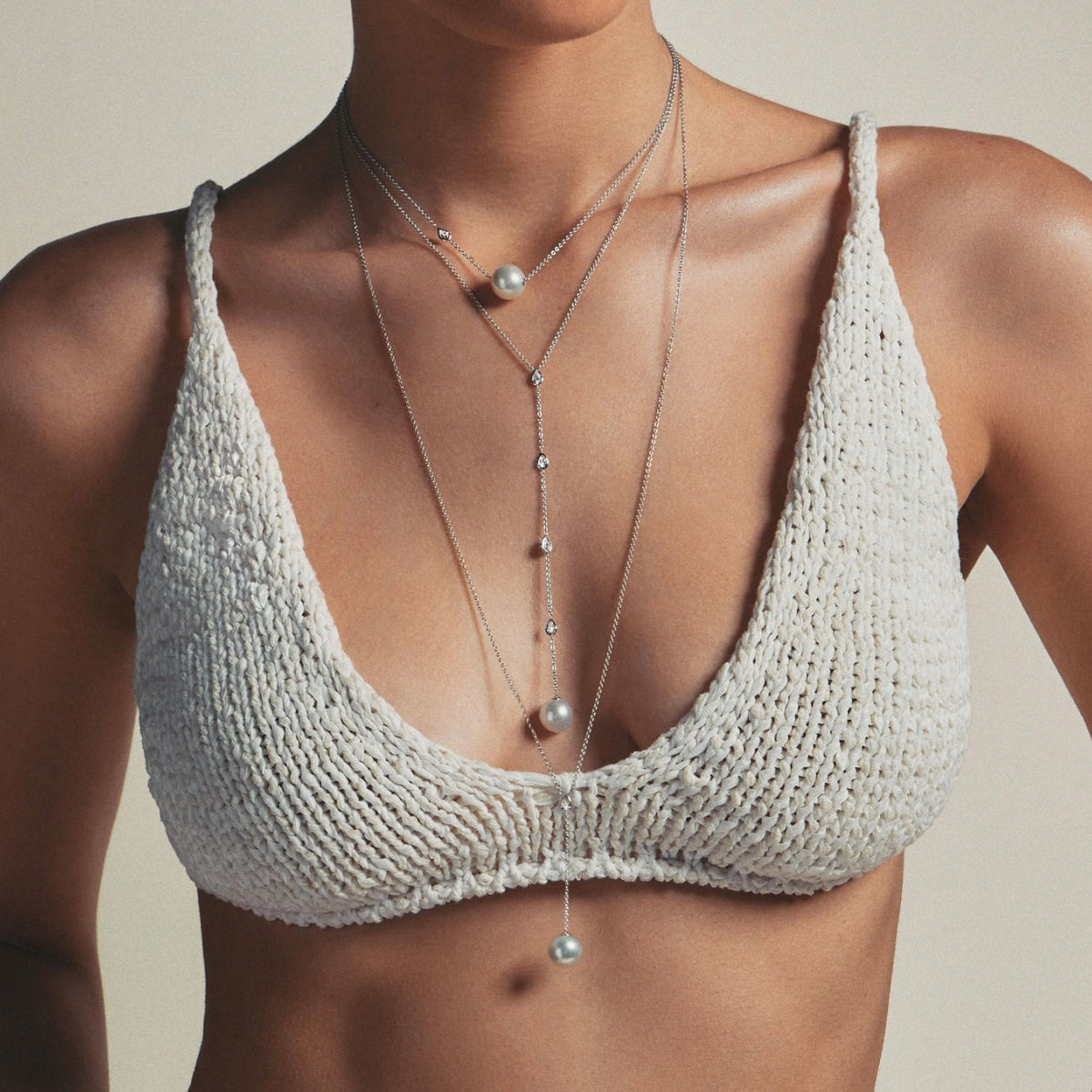
South Sea Pearls
Primarily farmed in Australia, the Philippines, and Indonesia. They are large pearls, often over 10mm, with a thick nacre layer typically 9mm to 20mm, with some exceeding 20mm in size. Colors range from white, silver, or golden hues. Shapes are round, oval, and baroque. South Sea pearls are among the most expensive due to their size and rarity.

Tahitian Pearls
Farmed in French Polynesia, particularly around Tahiti. Known for their dark, exotic colors, including shades of green, black, blue, purple, and even aubergine. Sizes generally range from 8mm to 18mm, though larger pearls can be found. Round, drop, and baroque shapes are common. Colors can be black, gray, peacock, and various iridescent hues. They have a unique, metallic luster and are highly sought after for their dramatic color variations.

Freshwater Pearls
Primarily farmed in China, though also found in other parts of the world. They are produced in freshwater mussels (as opposed to saltwater oysters). They are typically smaller than saltwater pearls, ranging from 5mm to 12mm, though larger sizes are increasingly common. Colors are white, pink, lavender, peach, and even deep purple hues. Freshwater pearls can also be dyed in various colors. Shapes can be highly diverse, with round, oval, baroque, and button shapes. Freshwater pearls tend to have a softer, more subtle luster than saltwater pearls but can be just as beautiful.
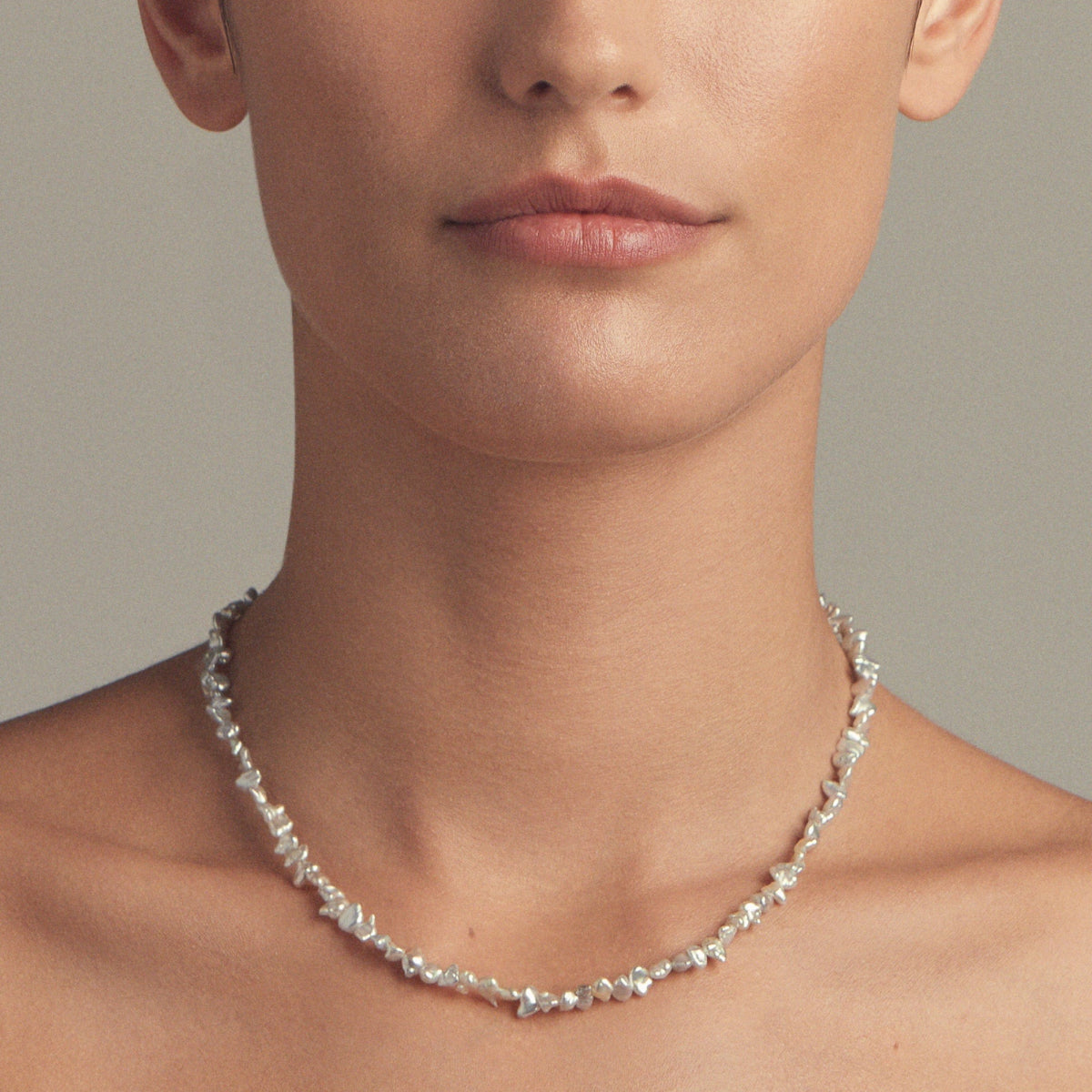
Keshi Pearls
These are small, non-nucleated pearls that are formed as a byproduct of the culturing process, typically in saltwater oyster species like Akoya, South Sea, or Tahitian oysters. They are often irregularly shaped (baroque) and have an exceptional luster.
Pearl Quality Factors
Regardless of the type, pearls are evaluated based on several factors, which include:
Luster
The quality and intensity of the reflection from the surface of the pearl.
Surface Quality
The number of blemishes or imperfections on the pearl’s surface.
Shape
Round pearls are typically the most expensive, but other shapes (oval, drop, baroque) can be equally desirable depending on the style.
Size
Larger pearls tend to be more valuable, especially in South Sea and Tahitian varieties.
Color
While color preferences vary, white and black pearls are the most traditional, with other colors like gold and pink being highly valued.
Discover Pearls

Diamonds
Diamonds are one of the most well-known and highly valued gemstones, admired for their brilliance, rarity, and symbolic meaning. Chemically, diamonds are a form of carbon (C) where the carbon atoms are arranged in a crystal lattice structure, making them incredibly hard—by far the hardest known natural material on Earth. This structure allows them to refract light in such a way that they sparkle with unmatched brilliance.
Here are important characteristics of diamonds:
Clarity
Diamonds are graded on their clarity, which refers to the presence of internal imperfections (called inclusions) or external blemishes. The fewer the imperfections, the higher the clarity grade and the more valuable the diamond. The best diamonds are "flawless" or "internally flawless."
Cut
The way a diamond is cut has a significant impact on its visual appeal. Diamonds can be cut into various shapes, such as round, princess, emerald, and cushion. The cut refers not only to the shape but also to how well the diamond's facets interact with light. The quality of the cut is judged based on its proportions, symmetry, and polish.
Color
Diamonds come in a range of colors, but the most highly prized are those that are colorless or near-colorless. The Gemological Institute of America (GIA) grades diamond color on a scale from D (colorless) to Z (light yellow or brown). A truly colorless diamond allows light to pass through it without absorption, enhancing its brilliance.
Carat Weight
The weight of a diamond is measured in carats (ct), and one carat is equivalent to 0.2 grams. Larger diamonds are rarer and more expensive, although a diamond's value also depends on its cut, clarity, and color.
Hardness
Diamonds rank 10 on the Mohs scale of mineral hardness, the highest possible rating. This makes them exceptionally resistant to scratching.
Discover Diamonds

Gold
Gold has been a staple in jewelry-making for centuries due to its beauty, rarity, and workability. Gold jewelry is typically alloyed with other metals like copper, silver, or palladium to increase strength and durability, as pure gold (24 karat) is too soft for everyday wear. The term "karat" (K) refers to the proportion of gold in an alloy, with 24K being pure gold.
Here's a more detailed description of gold:
Physical Properties
Color
Gold has a distinctive yellow hue, which is due to its unique ability to absorb and reflect light. It is the only metal that naturally occurs in this bright, metallic yellow color, though its shade can range from a rich, deep yellow to a paler, more subtle tone depending on the alloying metals.
Malleability and Ductility
Gold is extremely malleable and ductile. This property allows it to be shaped into intricate designs and is one of the reasons why gold has been historically favored for jewelry making.
Density
Gold is relatively dense (about 19.3 g/cm³), which gives it a substantial feel in jewelry.
Softness
Pure gold is soft compared to many other metals, which is why it is often alloyed with other metals to improve its strength and durability for use in jewelry design such as 14kt and 18kt.
Luster
Gold has a distinctive lustrous shine that is not only aesthetically pleasing but also does not tarnish easily.
Alloys
Pure gold is often too soft to be practical in many applications, so it is frequently alloyed with other metals to enhance its strength, color, and other properties. Common alloys include:
Yellow Gold
A combination of pure gold and metals like copper and silver.
White Gold
Gold mixed with metals like palladium, nickel, or silver, often coated with rhodium for a bright, white appearance.
Rose Gold
An alloy of gold with copper, giving it a warm, reddish hue.
Green Gold
A mix of gold and silver, sometimes with a small amount of copper, to produce a greenish tint.


